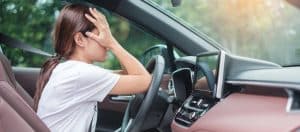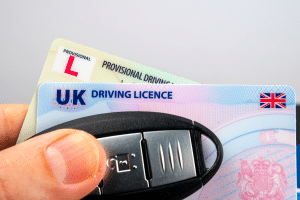Car parks are overcrowded accidents waiting to happen. Too often, drivers run into all types of misfortunes in car parks when they are reversing out of their parking bay. That is why it is so important to teach the benefits of reversing into parking spots so that the driver is able to pull forward. One of the advantages is that it is much safer to reverse into a space that the driver is able to see into, rather than reversing into an open area that is impossible for the driver to see completely out of. Cars are also easier to control when they are going forward than when they are going backwards. Furthermore, reversing close to a wall or another vehicle will make it much harder for thieves to gain access to the boot, and if there is ever an instance that compromises the safety of the driver, they are able to get in a pull away much more quickly.
Knowing all of the positives of reversing into a parking bay, one has to wonder why most drivers pull in straight? First is because it is ‘easier’ to pull in straight, but secondly, most people aren’t aware of how to properly reverse into such a narrow space. This is a manoeuvre that was only recently included into the driving test, so it makes sense why so many drivers aren’t well versed in the proper way to reverse into a parking spot. This is especially apparent for smaller car parks where drivers don’t believe they have enough space to complete the reverse parking technique.
Reversing into the space should be approached by analysing the surroundings around the vehicle. Drivers should first grasp how busy the car park is so as not to inconvenience other motorists. Once finding a space that could allow the car to fit, it is more important to make sure there will be enough room to adjust the car to backing into the space properly. Reversing into a bay from the left is beneficial because the driver is able to have a clear line of vision over their left shoulder. When picking this option, this also means that the driver will require less space too, so it is the overall safer method.
When reversing from the left, this skill set will depend on many of the strategies the driver has already mastered when reversing around a corner, so there is less risk or stress involved for the driver. Since the driver will drive past the actual parking space, it is important that they signal their intentions so other motorists aren’t too confused. Going slowly will give the driver the chance to position correctly. They should be striving to be about one metre from the end of the bay and one car length past the space. From here, drivers must be sure to look all around them for other cars or pedestrians that could pose a possible risk, starting with the right shoulder and checking every point until the left shoulder. Reverse in a straight line until the back of the car has just reached the bay before the desired spot, and then double check the surroundings before turning the vehicle. Start to slowly manoeuvrer the car by steering the wheel quickly to the right. It is essential that the car is moving while steering this fast so there is no dry steering during this procedure. The car will enter the desired space cleanly, and as the vehicle is on the straighter path, turn the wheels to the opposite direction to fully make sure the car is in the bay straight. Before exiting the car, realign the steering wheel to the straight position for moving forward properly.
Another more common way to reverse the car is by looking through the rear window. Most people find this option easier, but it is only possible if there is enough room in the car park to pull forward far enough in front of the targeted bay. Drivers must have enough room to steer the car in front of the desired space to where the entire back of the car is in route to be reversed properly. Depending on the available area, this can be difficult. After positioning the car, make sure to double check surroundings before placing the car in reverse safely and steadily. As the car begins to reverse into the space, it is essential for the driver to remember that the act of shunting to fix the car’s position between the lines has to be done before the car enters the bay. If this isn’t done prior, then the driver runs the risk of hitting the cars on either side of their vehicle.
Drivers must also remember that it is completely acceptable to move their mirrors before beginning these procedures. It is more important to not become to reliant on mirrors, because this can create bad habits of motorists not conducting overall observational checks all around the vehicle. This is so vital because not everything is going to be visible in the mirrors of the car! Getting too comfortable during any part of driving is when accidents tend to happen, drivers that get in the habit of reversing into car bays challenge themselves to stay on their toes.
Again, bay reverse parking is one of the main tactics to learn as a driver for many reasons. Safety while driving is a huge responsibility for all parties, and car parks are a haven for possible disasters. With small children walking about with their parents, distracted pedestrians, thefts, and the general unknown, it is always best to take as many precautions as possible for such uncertain moments in life. Reversing into car bays have finally made their way onto the driving test because of the many advantages this procedure poses, and it is really important for drivers to be aware of both common options when reversing into their spaces. Creating and maintaining the safest environment possible in car parks is essential for everyone, and this is just one good practise and habit all motorists should include in their daily ventures.



